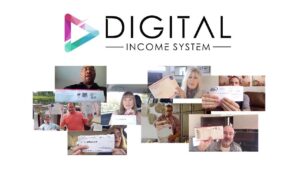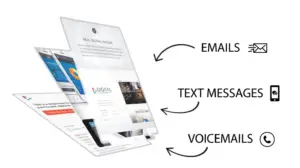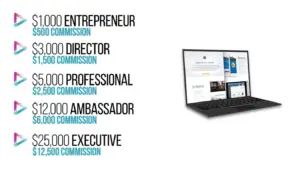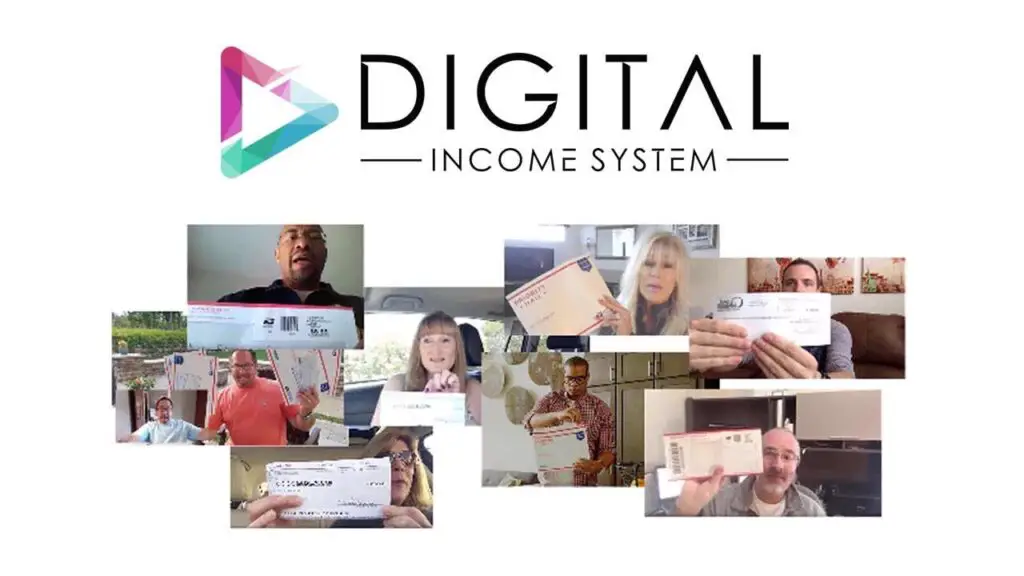Digital Income System was first launched somewhen in 2019. It looked like an affiliate program of sorts at that time, and the hype was considerable. The tool was advertised as an automatic online income generator. However, it quickly attracted a lot of criticism and became controversial, up to the point where they took it down.
This is why, in this article, we’ll take a look at what is Digital Income System. Or more precisely, what it was. We’re going to do a quick Digital Income system review and touch on the FTC investigation points.
Before we dive in, we’d like to point out that making money online is not an illusion. It is possible, although it is not easy. It requires constant work and perseverance. No platform can make you a profit quickly and easily without your clear action.
We have touched on the subject of earning an income from affiliate marketing programs here. This is a viable solution for long-term, sustainable profits.
Anyways, let’s go right ahead and discuss Digital Income System and what it was supposed to mean.

So, what is a digital income system?
Or more precisely, what it was? Let’s assume it’s April 2019. Digital Income System is a “young” platform with an automatic system that can help people like you and me make an extra income online. For all that, it looks very much like a multi-level marketing scheme, aka MLM, and a high-ticket affiliate marketing program, all in one.
They advertise a couple of tools, resources, and training that you can unlock when you become a member and thus achieve financial success. However, when you try to find more information about the company or its owner, you hit a wall. There is none. It is the first sign something might not be right. If you try to go directly to the Digital Income System website, you will only get a login page for affiliate members. To see more information about the system, you’ll have to go to one of the sales pages from the members’ affiliate links. To learn more, you’ll have to get in touch with one of their sales reps.
That being said, let’s unwrap the magic and pixie dust and look at how Digital Income System worked at its core. You would first have to sign up on their website and invest a sum of money into buying a level. Therefore, we’re already treading on the pyramidal scheme path.
A representative would then call you to help with the registration process. He would walk you through all the available levels and their benefits. Nonetheless, this is a sales call, so the spokesperson would try to sell you the most expensive pack.
So, was Digital Income System an affiliate marketing program? Was it an MLM scheme? Was it a scam or a legit business model? Let’s dig deeper!
A quick digital income system review
Digital Income System did not sell anything apart from itself. There was no sign of products or services that affiliates could market. So, how would they make money? From referring other people to the platform. Therefore, here’s the first pain point. How can you be part of an affiliate program that does not market anything apart from itself? What value do you bring to it, and what value does it bring to the world?
Read more: What are Affiliate Programs and How They Work
To join, you would have to buy into the program. The amount of the investment ranged between $1,000 and $25,000. So, there were 5 membership levels you could purchase. The higher the purchasing price, the greater the promised commission. Moreover, with every level you unlocked, you also got access to more tools and products to help you achieve your income goals. To earn access to all of them, you would have to buy all the levels.
However, these tools did not teach you anything apart from how to sell Digital Income System to your future referrals. You were not learning how to grow an audience, plan your content, and create an affiliate marketing strategy that could drive sales. Instead, your “coach” would instruct you on how to sell the levels to others.

If you were wondering about the training materials and tools you would get, here’s a run-down list:
- All sorts of pre-written promotional e-mails
- All kinds of pre-written SMS messages for your own contact list
- A campaign tracking tool
- Analytics tool
- Sales funnels
- Lead capture websites
- A Traffic Rotator System
- Ads
- Personal Development and Mindset Training (to help you believe you can do it)
- Social Media Marketing and paid advertising Training
- Technical training on how to use their tools
- Postcard marketing
What about their levels?
So, at first glance, the training materials and tools we were talking about above look excellent. However, they do not teach you anything about marketing an actual product, just the Digital Income System levels. Therefore, you could not apply this knowledge to any other affiliate marketing program out there.
Making a sale is not just dust in the wind. You have to build an audience to sell to, at first. To do that, you need to bring value to that audience. You need to earn people’s trust by offering them facts, not just dreams.
So, as wonderful as the Digital Income System promises sound, they were not substantial. You could not hold them in your hands. Thereby, what you were selling was just the dream of making a quick and easy profit. Is that wrong? Who are we to decide? However, is that ethical? Not quite.
Nevertheless, let’s take a closer look at Digital Income System’s Levels.
There were 5 digital income system levels
As we were saying above, you couldn’t choose one yourself from a digital income system website. You needed to request a sign-up on the page, and someone would then call you to help you decide on the level to start with.
So, the levels were:
- Entrepreneur – you had to pay a fee of $1,000 and would get a $500 commission on every new referral.
- Director – you had to pay a fee of $3,000 but would get $1,500 in recruitment commissions.
- Professional – The signup cost was $5,000, but you would have been entitled to a $2,500 commission
- Ambassador – The cost was $12,000, and you could have earned $6,000 for every new recruiting
- Executive – The most expensive level costs $25,000, but you would get $12,000 in recruitment commission.
As you can see, it was a costly program. If you signed up for the Entrepreneur level, you had to make 2 sales to break even, i.e. convince two other people to spend at least $1,000 on a Digital Income System level. One sad truth about these levels is that if you were on the Entrepreneur level and brought in an Executive level, you would only earn $500 of those $25,000. The rest of the $20,000 would be paid to the first Director, Professional, or other higher upline affiliate that recruited the Executive.
So, the system will distribute the rest of the money upwards on the pyramid. More than that, if an Executive (the highest level) is found in this upline search, they get the whole $20,000 balance.

Thereby, the highest an affiliate spends, the more it will receive in commissions. At any time, they can upgrade their levels to increase this money-making potential.
If you didn’t have enough money to purchase one of the higher levels, you could get in-house finance from them.
Was it a legit way of making money online?
We’re not here to pass judgment. Our sole purpose here was to discuss the platform’s features and how it helped you make money. However, we might have squeezed some bits of criticism in our description so far. So, let’s make it clear and try to answer the questions that have been asked all over the Internet: << Is Digital Income System Legit? >>
The main pros of this system are, or were:
- high ticket commissions
- coaching
- training and tools to help you make sales and drive traffic to your website
However, the main cons outweigh them pretty badly:
- The sign-up costs are high
- If you don’t invest more, you won’t have access to all the tools and training.
- The system is not as automated as they advertise it to be
- Continuous pressure to upgrade the membership and pour even more money into the system
- You don’t sell any real product or service; you only market their levels
The last con is probably the worst of them all. Making money online without bringing any value to the table is not ethical. Money was invented so that you could use them to exchange value. With Digital Income System, you don’t produce anything, don’t bring any value to the world; you just make the people on the top of the pyramid richer.
More than that, the digital income system complaints did not stop there. People began to protest that they could not reach the “guaranteed” money-making goal they signed up for. The list is long. That is why we’re going to discuss the Digital Income System FTC lawsuit and investigation.
What are the main complaints and the FTC investigation
FTC stands for Federal Trade Commission, and according to Wikipedia, it is an independent United States agency that enforces the civil U.S. antitrust law and protects the consumer. Their vision is that of a “vibrant economy characterized by vigorous competition and consumer access to accurate information”, as stated on their official website.
So, the FTC has sued Digital Income System for “fraudulent money-making” that “preys on consumers hoping to earn money from home”, as indicated in the official lawsuit.
The main complaints:
- The owners of the system falsely told consumers that they could earn large sums of money.
- The owners would make considerable profits from the membership fees, while most consumers never earned anything
- They violated the FTC Act and Business Opportunity Rule
Around May – June 2019, a couple of people like Brandon Frye or Jennifer Hedrick would flash checks on their social media accounts, boasting about the large profits made through Digital Income System. They also used the COVID-19 pandemic as a marketing advantage. In such difficult times, the system could provide the means of making money with “zero effort”.
However, you cannot make money with zero effort. Even the passive types of income require minimal maintenance effort and constant research.
Another major red flag of the Digital Income System was that the users were promised leads. The system would thus offer them all the necessary tools for making a profit. However, it didn’t do that. Moreover, the coaches and the system would encourage consumers to invest more money. Buying leads or traffic from the recommended business could increase their chances of making a sale. In many cases, it didn’t.
Digital income system FAQ
- When was Digital Income System shut down?
From what we could gather from users, Digital Income System was shut down in May 2020.
- Who are the Digital Income System Founders?
According to the FTC’s lawsuit, the defendants are Derek Jones Foley (owner), William Foley (owner), Cristopher Brandon Frye (promoter), Jennifer Hedrick (promoter), and Kaitlyn Scott (promoter).
- When was the FTC lawsuit filed?
The Digital Income System FTC Lawsuit was first filed under seal in November 2020.
- What is the status of the FTC complaint at the moment of writing this article?
On 19th December 2020, they granted a preliminary injunction for Brandon Frye. The trial has been scheduled for August 27th, 2021.
Why done-for-you systems are not reliable
There is nothing wrong with making money online from affiliate programs. Those tools exist, they’re legit, and they’re working. However, there are also a lot of schemes that can prove disastrous. So, you need to steer clear of those.
Usually, there are a few red flags that tell you which system is a scam and which is legit. First of all, stay away from done-for-you systems that promise quick money with no effort. Money is an exchange for value. So, you cannot deliver value without effort.
Secondly, try to avoid pyramidal systems where there are a lot of levels of commission. Usually, in these systems, only the people at the top win.
Last but not least, look for affiliate programs that enable you to promote a service or a product. Look for that palpable value that you can bring to the world. Making money online is not as easy as Digital Income System advertises. However, it’s not complicated either. You need work, trial and error, and perseverance.
You surely knew all of this, just wanted to remind you.

